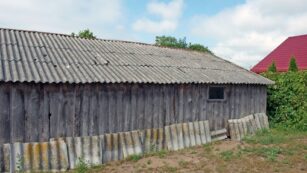
A comparison between awnings vs pergolas, covering the differences between the two, which is the superior option, and more.

Fortunately, there are many structures, such as an awning and a pergola, that you can place to provide shade and protection from the heat or rain while still allowing you to enjoy your day outdoors.
But which is the superior option? An awning and a pergola are compared side by side in this article. Continue reading to find out which one is ideal for you and which is the finest option for all-day outdoor protection.
Awning vs. Pergola: What’s the Difference?
Awnings and pergolas are more than just a great place to relax and enjoy yourself; they also offer shade and shelter from the elements. Color and style aren’t the only factors to consider while deciding between the two.
To choose the best outdoor feature for you, you must also evaluate the durability, comfort, and cost of each material.
Awning vs. Pergola: Which Is Better?

Pergolas have been used as decorative elements in gardens and on decks for ages. A pergola is typically made out of four pillars linked by beams and topped with a criss-cross wood roof.
The sun will still be able to shine through the lattice roof, illuminating the building while creating shadows.
A pergola, which is traditionally constructed of solid wood, gives your garden a rustic feel. The majority of homeowners construct their pergolas out of quality wood such as cedar, pine, or teak.
Furthermore, hanging planters or other kinds of roofing materials such as vines, bamboo, and cloth add to the structure’s aesthetic appeal.
Pergolas have changed throughout time as new materials and designs have been introduced. Pergolas have a contemporary look because to the use of vinyl, fiberglass, or composite materials.
Most importantly, they provide great protection from the elements. Here are some more pergola design ideas.
What about the awning now?
Unlike pergolas, an awning is made of cloth stretched over a metal frame and placed on a wall. Fabrics such as vinyl, polyester, acrylic, and even cotton are often used.
Keep in mind, however, that each material provides different degrees of shade and sun protection. In the meanwhile, there’s a large selection of colors, patterns, and designs to consider.
Awnings, on the other hand, are very versatile. They may be used to cover balconies, windows, and decks, and they can be rolled up manually or mechanically when not in use.
Additionally, bespoke awnings are available to fit your preferences.
Awning vs. Pergola: Maintenance and Durability

Awnings are most often constructed of water-resistant vinyl or acrylic. Both materials have a lengthy life expectancy of at least 5 years and up to 15 years.
Moreover, during the rainy season, vinyl is less prone to grow mold or emit a strong odor. Not to add, they’re fantastic at shielding you from harmful UV rays.
Acrylic, on the other hand, is a wonderful option for cold weather because of its ability to retain heat. It’s also reasonably priced and readily available.
Awnings need very little maintenance and are very easy to maintain. You’ll need to clear fallen twigs and leaves from time to time to keep the building from collapsing.
Dirt and other surface stains may be be removed using a power wash and gentle scrubbing. However, do not use strong chemicals on the fabric, such as bleach, since this will remove the awning’s protective coating.
Check for tiny tears around the metal frame as well. When a frame is exposed to the elements, it is more likely to rust.
Last but not least, during a storm, retract your awnings to protect them from being damaged.
A pergola’s longevity, like that of awnings, is mainly determined by the material used to construct it. A timber pergola, for example, may endure 5 to 10 years, while a vinyl or aluminum pergola can last 15 years to a lifetime.
Wood pergolas, in general, need staining or painting to provide an additional layer of protection against moisture and damaging UV radiation. Ensure that the wood is re-stamped every two years.
In addition, notching the posts offers protection from severe wind gusts.
Aluminum pergolas are rust-resistant and need little care, while vinyl and fiberglass pergolas just require wiping every now and again.
Because aluminum is lightweight, it’s important to consider how you’ll attach or anchor it to the ground. There are pergola design software applications that may assist you in creating a blueprint and estimating material prices if you are intending to build a pergola.
Awning vs. Pergola: Which Is More Comfortable?

Awnings are energy-efficient in addition to offering covered outdoor space. They may block sunlight and decrease heat inside when put above windows, which can help you save energy, particularly during the summer.
Some awnings have the advantage of being flexible, allowing more people to use the additional space offered. Others, on the other hand, may be hung vertically and used as window shades.
Pergolas, on the other hand, are permanent structures with a set covering. A pergola is a good option if you want to enjoy the sun without being directly exposed to it.
However, if you need additional shade, a pergola canopy, for example, may be used.
TIP: You may also put curtains around the pergola if you want additional privacy.
Finally, an awning can decrease the temperature by 10 to 20 degrees Fahrenheit, while a pergola may reduce the temperature by 5 to 15 degrees Fahrenheit.
Awning vs. Pergola: How Much Does It Cost?

Custom-built high-end pergolas, on the other hand, may cost up to $10,000, without including roofing, curtains, and other extras, which can add to the cost. On this page, you may learn more about the most popular pergola proportions.
Awnings, on the other hand, may cost anything from $100 to $3,500. The most affordable awnings are portable awnings, whereas the most costly awnings are motorized high-end awnings.
In any case, the kind of material, size, and design mechanisms to consider when pricing these outdoor elements are the variables to examine.
Between an awning and a pergola, which is better?
Finally, the choice between an awning and a pergola is a personal one.
Are you OK with a versatile hue that gets the job done without sacrificing aesthetics? Awnings may suit your preferences. Do you want a more durable construction that also adds to the aesthetic appeal of your yard? Then a pergola might be a better option for you.
Read this post about contemporary pergola designs for more relevant information.
Frequently Asked Questions
What is the difference between awning and pergola?
Awning is a type of roof, usually found on buildings. Pergola is a type of garden structure that has arches and supports with a flat roof.
What is a pergola with a roof called?
A porch.
What type of awning is best?
Awnings are a type of cover that can be used to protect the outside of your home from rain and sun. They come in many different shapes, sizes, and materials.
Related Tags
This article broadly covered the following related topics:
- what is a pergola
- what is a pergola good for
- what is the purpose of a pergola
- pergola vs gazebo
- diy pergola canopy












